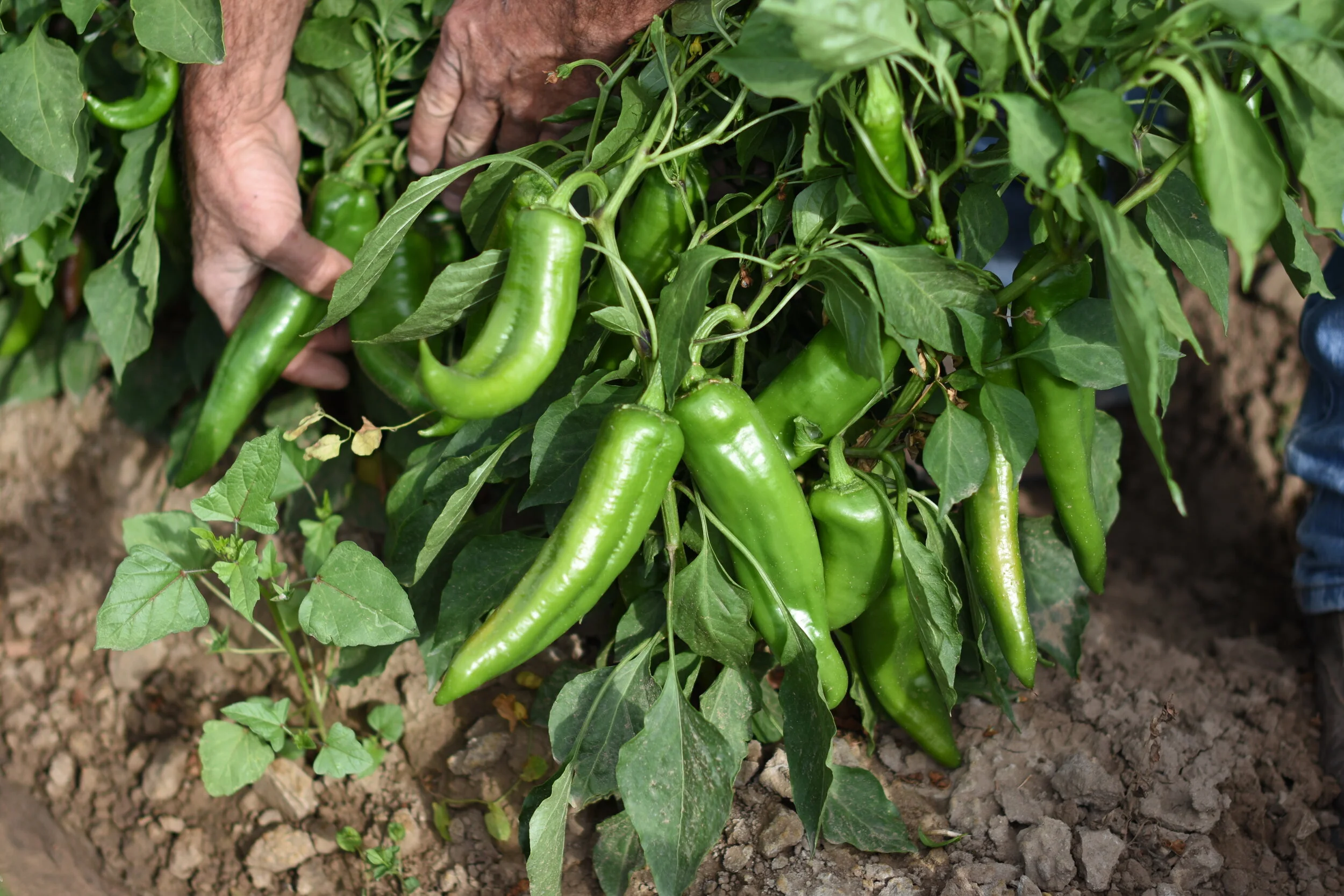Hatch vs. Pueblo Chiles: What’s the Difference?
With growing regions a mere 500 miles apart, Hatch and Pueblo chiles could not be more different from each other. Despite the competitive debate of which is better, comparing the two is like comparing apples to oranges. Here are their differences.
Hatch Chiles
Heat Level? The heat level of Hatch chiles ranges from 0 to 7,000 Scoville Heat Units, depending on the variety planted. Milder and more consistent than Pueblo chiles, Hatch chiles are great for cooking because they provide a balanced, tickle of heat.
History: Technically Hatch is not a type of pepper. Hatch is a marketing term that refers to a New Mexico Chile that has been grown in the Hatch Valley of New Mexico. Similar to Champagne wine, the Hatch chile must be grown in the Hatch Valley in order to be called Hatch, otherwise it is simply a New Mexico Chile. This modern-day chile plant was developed at New Mexico State University in 1894. The peppers start out green and then ripen to red, although most are harvested before they change color. The shape of a Hatch pepper is longer and skinnier than a Pueblo pepper. Their short growing season helps make Hatch peppers special, they’re planted in April and harvested in August. To preserve the peppers for later in the year, many are roasted and frozen after harvesting.
Pueblo Chiles
Heat Level? The heat levels of Pueblo chiles are generally higher and tend to be more inconsistent than a Hatch. The spiciness ranges from 5,000 to 20,000 Scoville Heat Units.
History: Mirasol’s Mosco is the true variety name of the Pueblo chile. A Mirasol’s Mosco can be grown elsewhere, but it can only be called a Pueblo chile if it is grown in Pueblo, CO. Mira sol means to look at the sun and references the growing pattern of the chiles. Unlike many other peppers, the Pueblo chile grows pointing up, towards the sun, instead of hanging down. Colorado’s sunny, hot days, cool nights, and dry climate is ideal for giving the chile its hot, bold flavor and thicker skin, which leads to a delightful crunch when bitten into. The history of the Pueblo chile is uncertain, but most likely shorter than the Hatch. A variety that is similar to what is now grown in Pueblo was most likely first brought to the area in the 1840’s. Since then, selective cultivation and planting has turned the chile into the crop we see today.
Green chiles are a trending ingredient showing big growth on menus and adoption by customer. Discover our Green Chile soups and sauces HERE.
Marco’s items, like our green chile saues, can be found through distributors in several states, including Colorado, California, Arizona, New Mexico, Idaho, Nebraska and more!



